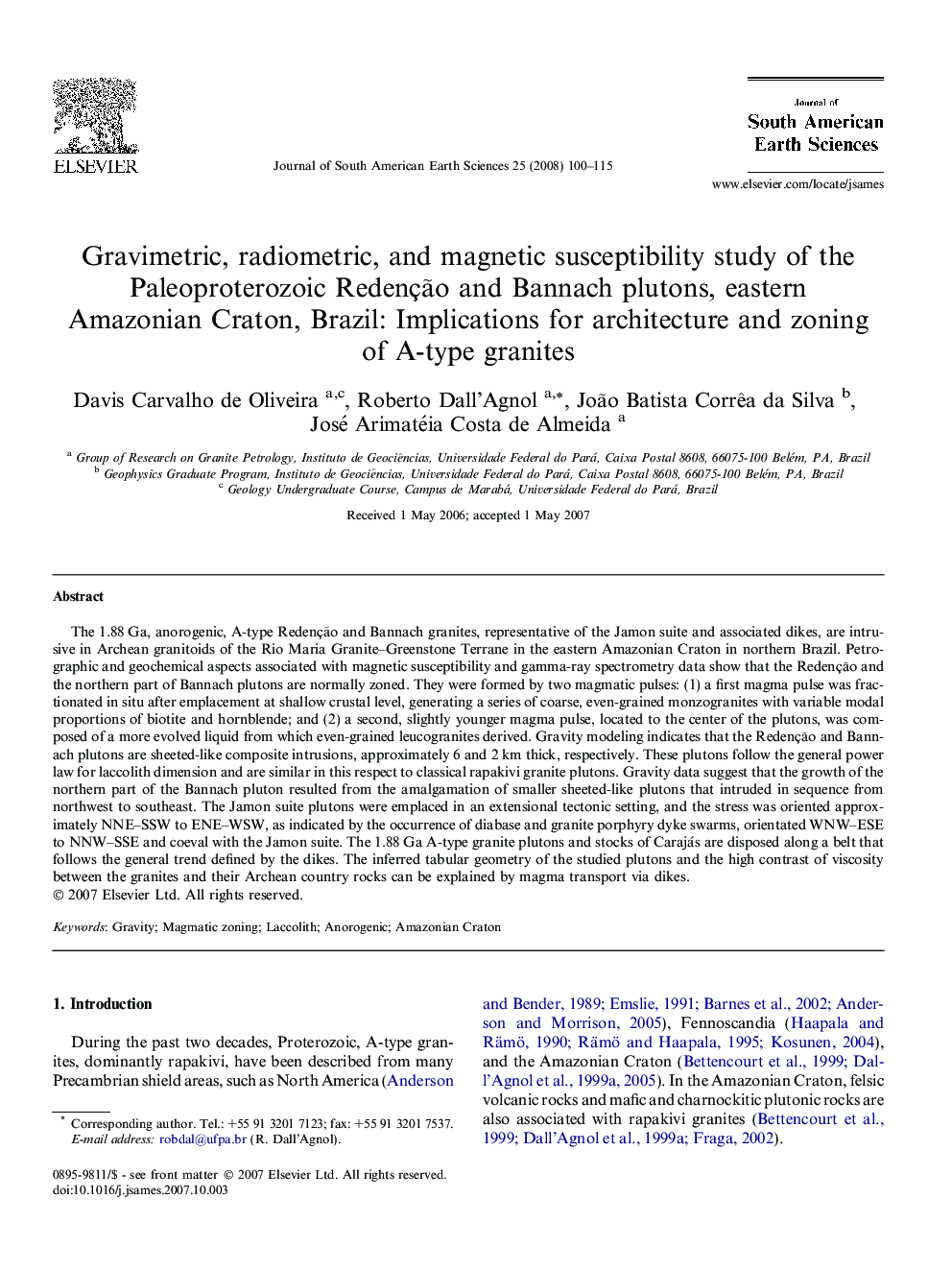| کد مقاله | کد نشریه | سال انتشار | مقاله انگلیسی | نسخه تمام متن |
|---|---|---|---|---|
| 4682982 | 1348958 | 2008 | 16 صفحه PDF | دانلود رایگان |

The 1.88 Ga, anorogenic, A-type Redenção and Bannach granites, representative of the Jamon suite and associated dikes, are intrusive in Archean granitoids of the Rio Maria Granite–Greenstone Terrane in the eastern Amazonian Craton in northern Brazil. Petrographic and geochemical aspects associated with magnetic susceptibility and gamma-ray spectrometry data show that the Redenção and the northern part of Bannach plutons are normally zoned. They were formed by two magmatic pulses: (1) a first magma pulse was fractionated in situ after emplacement at shallow crustal level, generating a series of coarse, even-grained monzogranites with variable modal proportions of biotite and hornblende; and (2) a second, slightly younger magma pulse, located to the center of the plutons, was composed of a more evolved liquid from which even-grained leucogranites derived. Gravity modeling indicates that the Redenção and Bannach plutons are sheeted-like composite intrusions, approximately 6 and 2 km thick, respectively. These plutons follow the general power law for laccolith dimension and are similar in this respect to classical rapakivi granite plutons. Gravity data suggest that the growth of the northern part of the Bannach pluton resulted from the amalgamation of smaller sheeted-like plutons that intruded in sequence from northwest to southeast. The Jamon suite plutons were emplaced in an extensional tectonic setting, and the stress was oriented approximately NNE–SSW to ENE–WSW, as indicated by the occurrence of diabase and granite porphyry dyke swarms, orientated WNW–ESE to NNW–SSE and coeval with the Jamon suite. The 1.88 Ga A-type granite plutons and stocks of Carajás are disposed along a belt that follows the general trend defined by the dikes. The inferred tabular geometry of the studied plutons and the high contrast of viscosity between the granites and their Archean country rocks can be explained by magma transport via dikes.
Journal: Journal of South American Earth Sciences - Volume 25, Issue 1, February 2008, Pages 100–115